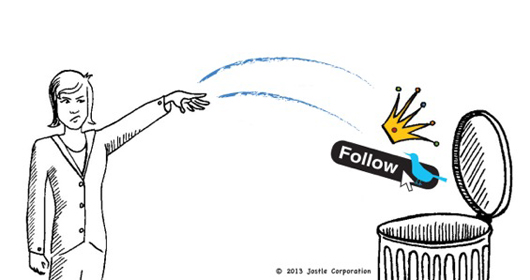Hierarchy & Social Networks Both #FAIL. Now What?
By Brad Palmer
The advent of social platforms and communication tools is rapidly changing how information flows inside of organizations. This is challenging how decisions get made and how work gets done. There is even talk that management is no longer required, backed by claims that peer-to-peer networks are more effective at getting work done. Are they?
Before all this, the hierarchy was everything – it mapped how work was organized, how decisions were made, and how communication flowed. This approach has serious problems:
- Employees with seniority spend most of their time managing (maintaining the hierarchy) rather than leading, inspiring and clarifying the right strategies.
- Communication must flow up and down the hierarchy, rather than directly between those with questions and answers.
- Decisions are often made by people that don’t fully understand the facts and implications.
All of this leaves employees disconnected and uninspired. The net result is poor organizational agility – an inability to adapt quickly enough to compete in today’s connected world.
To the rescue came the enterprise social platforms (Yammer, Jive, Moxie and many others). By introducing a “Facebook for the enterprise” approach, these platforms promised to “change how work is done”. But they are not working.
Social networks fail because they:
- Confuse and challenge how decisions are made. Social networks layer peer groups over the established structure of teams. Be they hierarchical or self-managed, work gets done by organized teams of specialists, not by loosely formed clusters of peers.
- Inflict massive change in how and where work gets done. Data and processes need to be moved to new tools. More importantly, a huge change in culture must occur for social networks to work, impacting and decisions are made and how leadership is viewed.
- Require mass participation. This doesn’t happen. People are busy at work, focused on their own tasks and contributions. They don’t have time to comment and follow what everyone else is up to.
- Introduce noise. Should mass participation actually occur in parts of the organization, the immediate result is too much information about too many details.
Although many companies have tried to implement internal social network platforms, there are very, very few examples of successful engagement and transformation. Now what?
It’s time to return to the fundamentals: leadership, communication, and culture. We need to develop enterprise platforms that:
- Focus on people and how to enable them in the workplace.
- Help leaders clarify goals, organize teams and inspire success.
- Energize cultures by recognizing achievements, connecting people and sharing stories.
Employees simply need to:
- Feel their contributions matter and are part of a greater quest.
- Know they can quickly locate information and help.
- Have a real-time sense they are part of an extended and energized organization accomplishing things together.
Organizations that achieve this will have a potent culture that delivers the passion and agility required to innovate and win.
Brad Palmer and Jon Husband are speaking at the HRMA Conference + Tradeshow 2013 in Vancouver. Their session, Adapting Hierarchies for the New Workplace is on Thursday, May 2.
Brad Palmer is the co-founder and CEO of Jostle Corporation.









